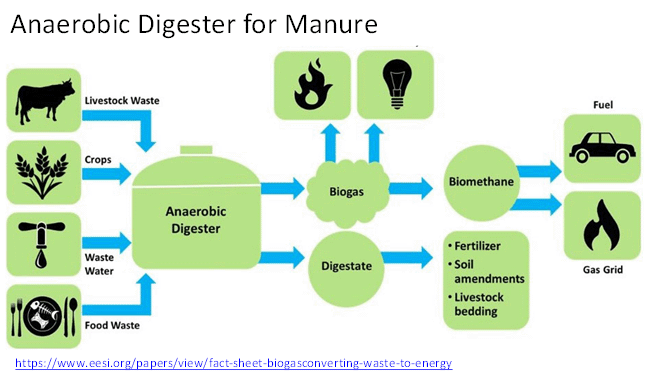June 2020
How can the fossil fuel, waste management and agriculture sectors decrease methane? A science policy symposium from the Climate and Clean Air Coalition (#CCAC) last week provided policy experiences and recommendations from experts.
What is methane?
Methane (CH4) is a greenhouse gas (#GHG) that is more efficient at trapping radiation (heat) than carbon dioxide (#CO2); it warms Earth 84 times as much as CO2 does over a 20-year period. Methane also contributes to the formation of ozone (#O3), which further impacts health, causes more than a million premature deaths and decreases the crop yields as well as their nutritional quality. Methane, including the ozone it produces, is responsible for 40% of the global temperature increase, according to CCAC.
Where does methane come from?
Methane is emitted naturally by wetlands but over half of methane emissions come from three main human activities, or anthropogenic sources:
-
- Energy: The drilling, extraction, processing, storage and transport of natural gas and crude oil, as well as coal mining, create 29% of methane produced due to human activity.
- Waste: The decay of organic matter in landfills and wastewater treatment contribute another 20% to human-caused methane emissions.
- Agriculture: 50% of anthropogenic methane emissions come from farming. Cattle are the largest source of methane, followed by rice paddies. Methane is also produced in lagoons where manure is stored.
Because human activity causes so much methane to be emitted, it is within our capabilities to reduce the emission rate.
How exactly does farming cause methane?
The majority of agricultural methane is emitted by livestock. When ruminants such as cows, sheep and goats digest food in their rumens (stomach), the food is fermented and methane is produced; the animals then release the methane by exhaling, farting and burping. The United Nation’s Food and Agriculture Organization (FAO) estimates that livestock emit 3.1 Gigatons CO2-equivalent of methane per year, a number that is rising due to increasing demand for beef worldwide.
Rice cultivation is another source of methane. The water in the rice paddies blocks oxygen from reaching the soil; this enables methane-emitting bacteria to grow. The longer the paddy is kept flooded, the more the bacteria builds up.
Really?
Yes. Research has linked the beginnings of agriculture and forest clearing in Eurasia 8,000 years ago to higher CO2 levels and the start of rice cultivation based on an increase in methane 5,000 years ago. It is estimated that the gases emitted by early farmers caused approximately 1 – 2°C increase in global temperatures, enough to stop glaciers in northern Canada. Similarly, the abandonment of farms in Europe during outbreaks of the Bubonic Plague led to reforestation and subsequent decreases in CO2.
How do we reduce methane in agriculture?
Technical solutions and know-how for reducing methane produced by farming exist. Mitigation solutions include:
-
- Giving animals feed that ferments less, such as grain or fresh grass and alfalfa, will reduce the amount of methane produced during digestion and in manure.
- Making animals healthier and more productive via better breeding and feeding so that fewer animals are needed to produce the same amount of milk.
- Using better manure management, such as covering the manure piles with solid roofs to trap the methane.
- Storing manure in anaerobic lagoons or digesters to increase the production of methane and then capturing the biogas as a source of energy. (See diagram of anerobic digester)
- Draining rice paddies at least once, as is done in parts of China and Japan, to prevent methane from building up; this technique has the added benefits of using less water as well as increasing crop yields according to some studies.
Yet…
As CCAC points out, technical measures are not sufficient to reduce methane enough to meet the 1.5°C reduction target.
That means a demand-side solution is equally important: Decreasing the demand for meat products.
This 20 minute CCAC video provides a more detailed discussion of the three anthropogenic sources of methane: https://www.youtube.com/watch?v=mBjesciLrLE



Up-and-coming technical solutions are encouraging. Methane is produced by a small portion of the bacteria in a cow’s guts. Production of methane can be inhibited by supplementing feed with seaweed:
https://www.discovermagazine.com/environment/feeding-seaweed-to-cows-could-curb-their-methane-laden-burps
Or just eliminate the microbes themselves by vaccination:
https://www.bbc.com/future/article/20190806-how-vaccines-could-fix-our-problem-with-cow-emissions
We live in exciting times!
How easy is it for farms to implement these mitigation solutions?
Hi Paul,
I wasn’t aware of the use of seaweed; thanks for passing that strategy along.
Leona, I think the ease will be based on several factors; smaller, poorer farms are more likely to lack capital for investment in covered manure lagoons, for example.
Some of the challenges are cultural and educational–getting farmers to realize the benefit both to the environment and themselves for draining rice paddies, for example.